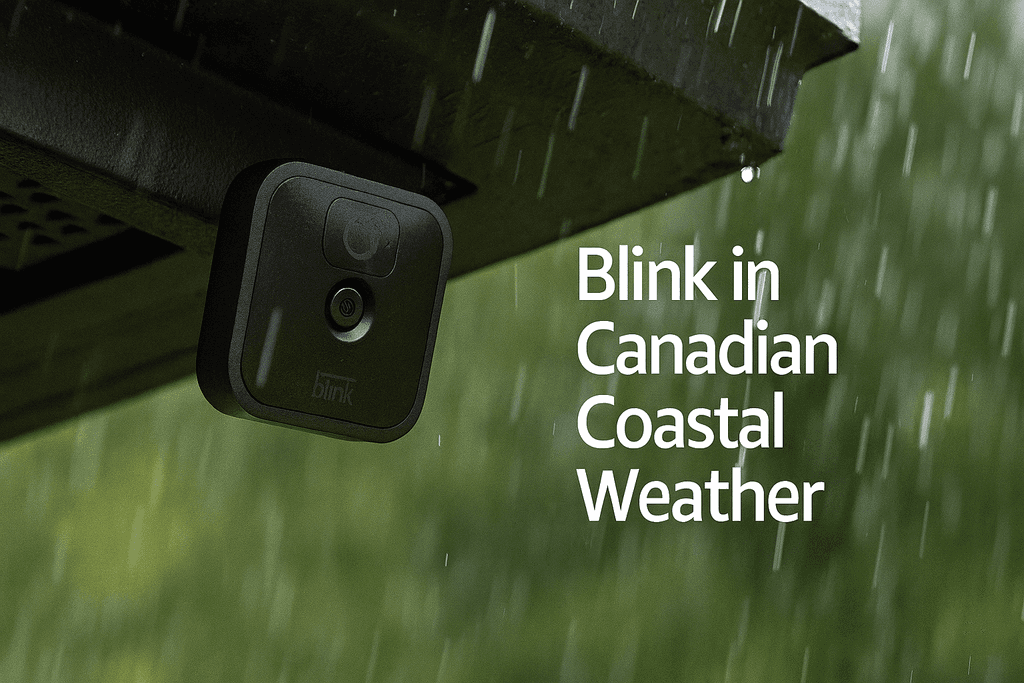Blink Camera Performance in Canada’s Coastal Climates: Salt, Wind & Rain
How Blink Cameras Handle Canada’s Coastal Weather
Learn how Blink cameras withstand salt air, wind, and rain in Canada’s coastal regions. Expert tips for installation, battery life, and long-term durability.
Discover how Blink security cameras perform in Canada’s coastal climates—from salty air to heavy rain. Learn installation tips and real-world insights for reliable protection.
How Blink Performs in Canada’s Coastal Climates: Salt, Wind, and Rain
From the rugged shores of British Columbia to the windswept coastlines of Newfoundland, Canada’s coastal regions present a unique challenge for outdoor security technology. Salt-laden air, relentless wind, and heavy rainfall can wreak havoc on electronics—especially security cameras. For homeowners, Airbnb hosts, and rural property managers seeking reliable surveillance, Blink cameras offer a promising solution. But how well do they truly perform in these harsh environments?
🌊 Coastal Climate Challenges: What Blink Cameras Are Up Against
Canada’s coastal zones are defined by:- High humidity and salt exposure: Salt in the air accelerates corrosion, especially on metal components and exposed circuitry.
- Frequent rain and storms: From Pacific downpours to Atlantic squalls, moisture intrusion is a constant threat.
- Strong winds: Wind-driven debris and vibration can affect camera stability and image clarity.
- Temperature swings: Coastal areas often experience rapid shifts between warm and cold, which can stress electronics.
🛡️ Blink’s Weather Resistance: IP65 Rating Explained
Blink Outdoor cameras are rated IP65, meaning they are:- Dust-tight: Fully protected against airborne particles, including salt and sand.
- Water-resistant: Can withstand low-pressure water jets from any direction, but not full submersion or prolonged soaking.
🧪 Real-World Performance in Coastal Canada
British Columbia (e.g., Vancouver Island, Tofino)
- Rainfall: High annual precipitation, especially in fall and winter.
- Performance: Blink Outdoor cameras perform well when mounted under eaves or weather shields. Direct exposure may lead to fogging or water ingress over time.
- Tip: Use silicone sealant around mounts and consider anti-fog inserts for lenses.
Nova Scotia & Newfoundland
- Salt air: High salinity due to proximity to the Atlantic.
- Performance: Corrosion risk is higher. Blink’s plastic housing helps, but metal mounts and exposed screws may degrade.
- Tip: Opt for marine-grade mounting hardware and inspect connections seasonally.
Gulf of St. Lawrence & Eastern Quebec
- Wind: Strong gusts and freezing rain in winter.
- Performance: Blink’s lightweight design may wobble in high winds, affecting motion detection accuracy.
- Tip: Use vibration-dampening mounts and secure with weatherproof brackets.
🔋 Battery Life and Connectivity in Wet Conditions
- Battery drain increases in cold, wet environments due to power demands for motion detection and IR night vision.
- Wi-Fi signal may weaken during storms or in remote coastal areas.
Solutions:
- Use Lithium AA batteries for better cold-weather performance.
- Install Wi-Fi extenders or mesh systems for stable connectivity.
🧰 Installation Best Practices for Coastal Users
To maximize Blink’s lifespan and reliability:- Mount under cover: Eaves, porches, or custom weather hoods.
- Avoid metal-on-metal contact: Use plastic or rubber washers to reduce corrosion.
- Seal cable entry points: Prevent moisture from entering junction boxes or wall penetrations.
- Regular maintenance: Wipe lenses, check for salt buildup, and test motion detection monthly.
👨👩👧👦 Who Benefits Most?
Blink’s compact, wireless design makes it ideal for:- Airbnb hosts near lakes or oceans
- Coastal farmers monitoring livestock or equipment
- Seniors seeking simple, app-based security
- Renters who need non-invasive, portable solutions
“Finally, a Camera That Survived the Atlantic Fall”
Quote text hereWe live near Lunenburg, Nova Scotia, and the salty air plus sideways rain usually ruins outdoor tech fast. I installed a Blink Outdoor under our porch roof in September, and it’s still going strong through windstorms and wet mornings. The app is simple, and motion alerts have been reliable—even when the wind shakes the trees. I didn’t expect much, but it’s held up better than our last wired system.
—Natalie M., coastal homeowner
🧠 Final Thoughts: Is Blink Coastal-Ready?
Frequently Asked Questions
1. Can Blink cameras handle salty air near the ocean?
Yes, Blink Outdoor cameras have plastic housings that resist corrosion better than metal-bodied devices. However, regular cleaning and protected mounting are recommended in high-salinity zones.
2. Will heavy rain damage my Blink camera?
Blink Outdoor is IP65-rated, meaning it can handle rain but not full submersion. Mounting under eaves or using weather shields helps extend its lifespan.
3. Do Blink cameras work in cold coastal winters?
Yes, but battery life may decrease in freezing temperatures. Using lithium AA batteries improves performance in cold, wet conditions.
4. Is Wi-Fi reliable for Blink in remote coastal areas?
Wi-Fi can be affected by storms or distance from the router. A mesh system or Wi-Fi extender is recommended for stable connectivity.
Product Comparison
| Feature | Product 1 | Product 2 | Product 3 |
|---|---|---|---|
| Feature | Blink Outdoor | Arlo Essential XL | Ring Stick Up Cam |
| Weather Resistance | IP65 (rain/salt resistant) | IP65 (rain/snow resistant) | IPX5 (rain only) |
| Battery Life | Up to 2 years (AA) | Up to 12 months (rechargeable) | 6–12 months (rechargeable) |
| Coastal Durability | Good with shielding | Strong with metal body | Moderate, needs cover |
| Night Vision | Infrared (standard) | Infrared + color | Infrared |
| Installation Ease | Wireless, tool-free | Wireless, magnetic mount | Wireless, screw mount |
| App & Alerts | Blink App, motion alerts | Arlo App, smart alerts | Ring App, customizable alerts |
